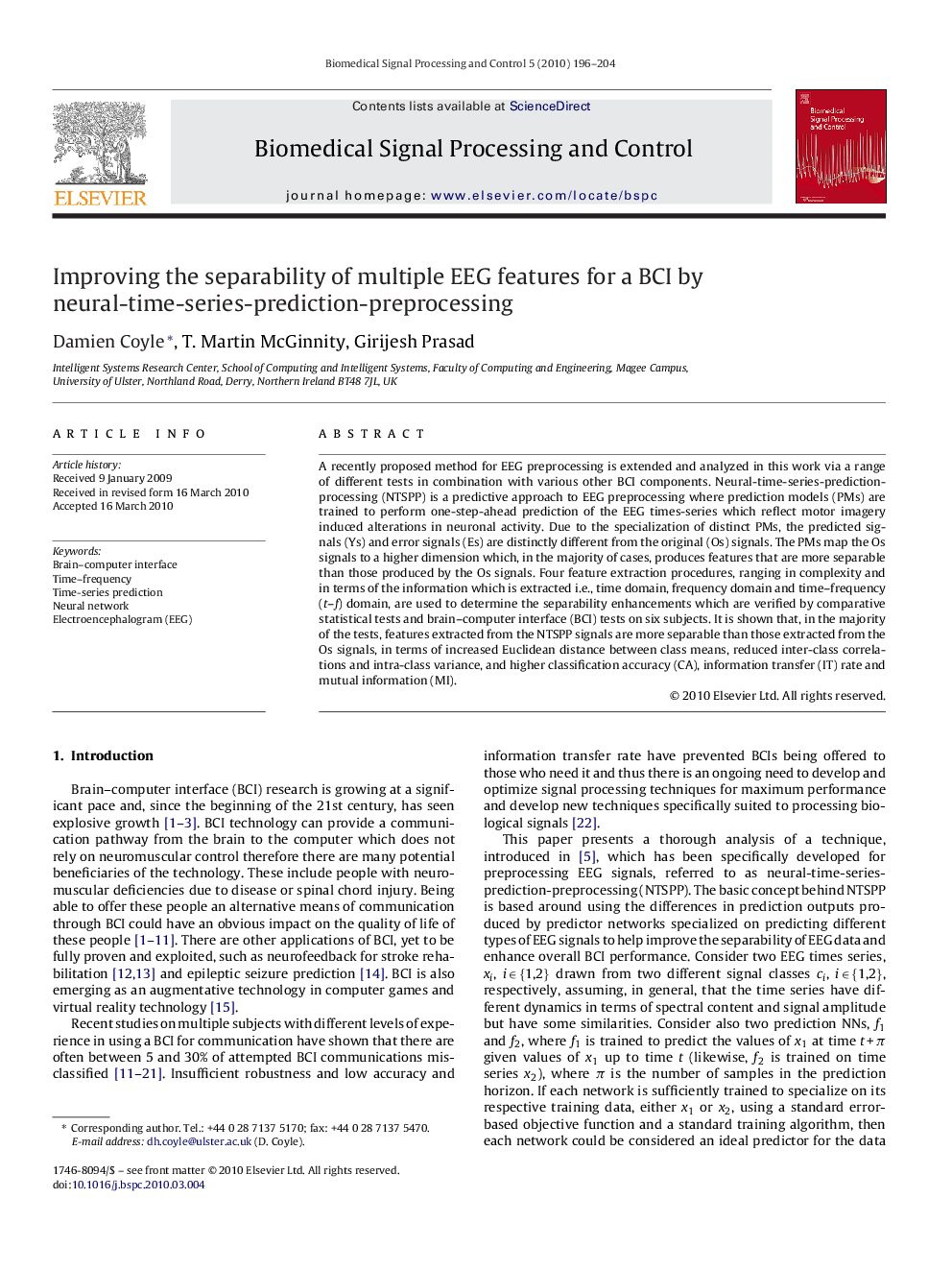| Article ID | Journal | Published Year | Pages | File Type |
|---|---|---|---|---|
| 558254 | Biomedical Signal Processing and Control | 2010 | 9 Pages |
A recently proposed method for EEG preprocessing is extended and analyzed in this work via a range of different tests in combination with various other BCI components. Neural-time-series-prediction-processing (NTSPP) is a predictive approach to EEG preprocessing where prediction models (PMs) are trained to perform one-step-ahead prediction of the EEG times-series which reflect motor imagery induced alterations in neuronal activity. Due to the specialization of distinct PMs, the predicted signals (Ys) and error signals (Es) are distinctly different from the original (Os) signals. The PMs map the Os signals to a higher dimension which, in the majority of cases, produces features that are more separable than those produced by the Os signals. Four feature extraction procedures, ranging in complexity and in terms of the information which is extracted i.e., time domain, frequency domain and time–frequency (t–f) domain, are used to determine the separability enhancements which are verified by comparative statistical tests and brain–computer interface (BCI) tests on six subjects. It is shown that, in the majority of the tests, features extracted from the NTSPP signals are more separable than those extracted from the Os signals, in terms of increased Euclidean distance between class means, reduced inter-class correlations and intra-class variance, and higher classification accuracy (CA), information transfer (IT) rate and mutual information (MI).
